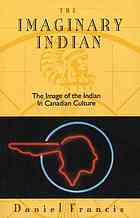Media Awareness Network
http://www.media-awareness.ca/english/issues/stereotyping/aboriginal_people/aboriginal_portrayals.cfm
In my Module 2 searches of stereotypes of Indigenous peoples, I came across this great site by the Media Awareness Network and Media Stereotyping and Common Portrayals of Aboriginal People. This site provides excellent links to other related resources (reports, articles, websites, and even contests) on stereotyping and Indigenous peoples such as: Stereotyping Indians by Omission (Peace Party, 2001); Indian Women as Sex Objects (Blue Corn Comics, 2001); The Basic Indian Stereotypes (Blue Corn Comics); Coyote Goes Hollywood (Native Peoples Magazine, 1997); Indian Princesses and Cowgirls: Stereotypes from the Frontier (An Exhibition by Gail Guthrie Valaskakis and Marilyn Burgess, 1997); Daughters of the Country (NFB, 1987); Stereotype of the Month Contest
It describes the background of stereotypes of Indigenous peoples and how Hollywood has portrayed these stereotypes. This site ties in well with my topic of Elders and Technology and closely correlates with our Module 2 discussions of stereotypes. This site does a great job of addressing different types of Indigenous stereotypes as well as Prins (2002) description of ‘the paradox of primitivism’ and the romantic exoticism embedded in white ideology and Hollywood’s depiction of Indigenous peoples.
It is well designed, aesthetically pleasing, user-friendly, easy to navigate, includes 3 different menu bars. On the right it is organized into the following categories: Overview, Media Violence, Media Stereotyping, Online Hate, Information Privacy and Media and Canadian Cultural Policies. At the bottom, further links to Common Portrayals of Aboriginal People. On the left it has page links for Blog & News, Issues, Research, Educational Games, Special Initiatives, Resource Catalogue, Content Cart, Site Directory, & Help. On top the menu includes home, about us, memberships, supporters, press center, contact us (to find contact information, etc.), a French language choice and a search bar. Excellent information, this site will be one that I will use and reference in the future!
